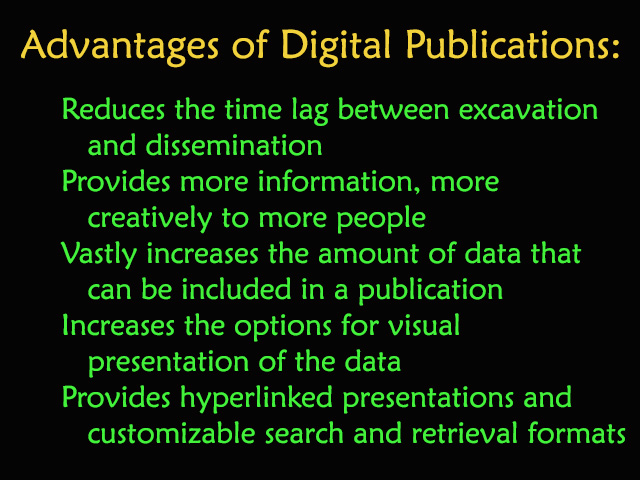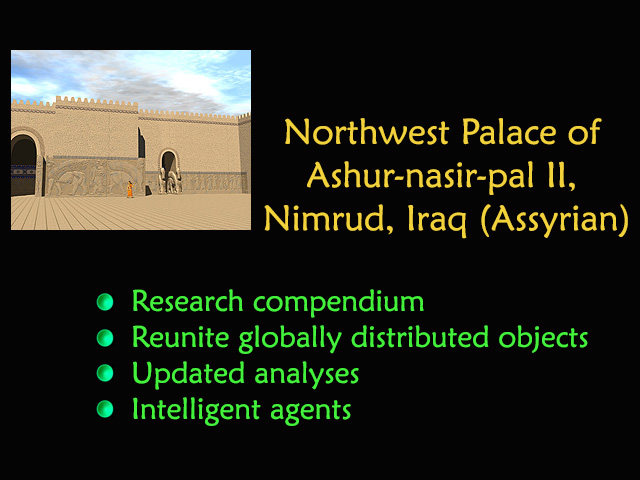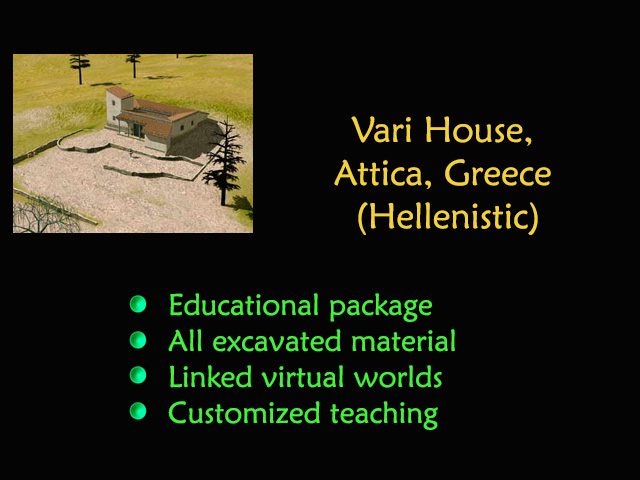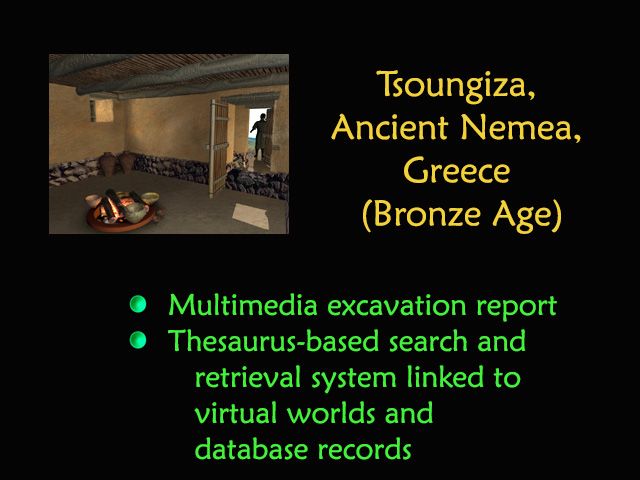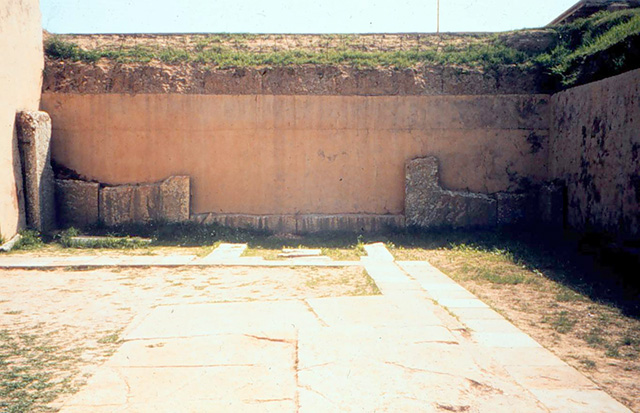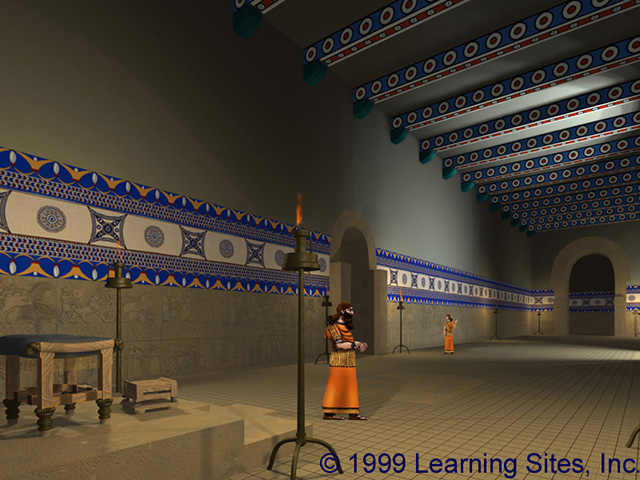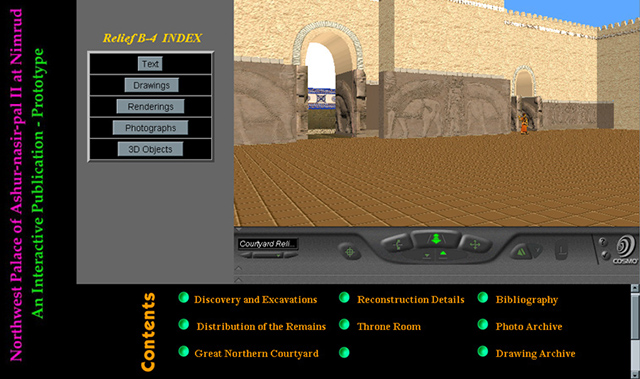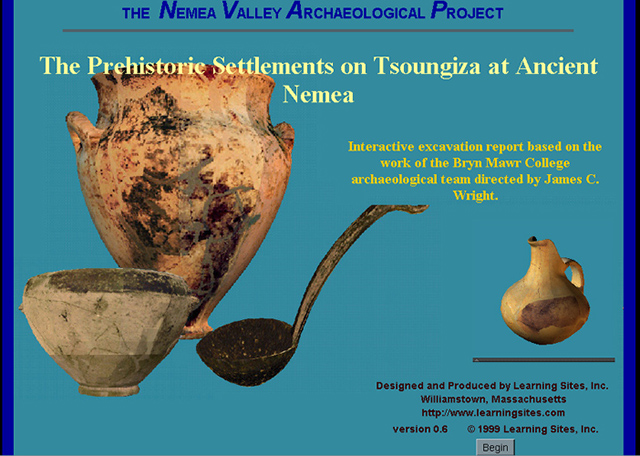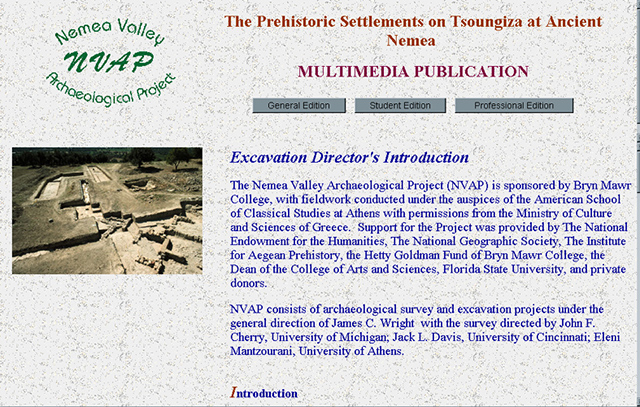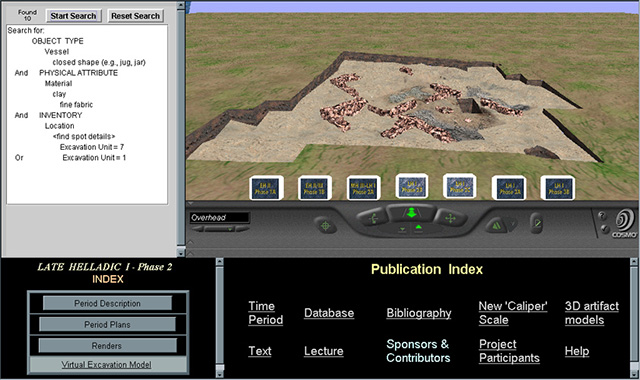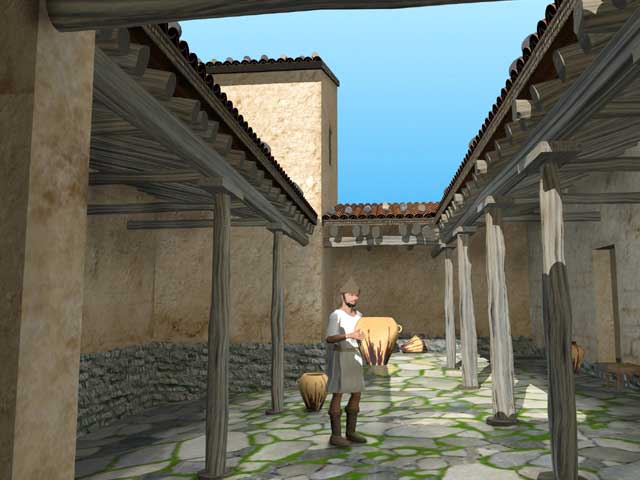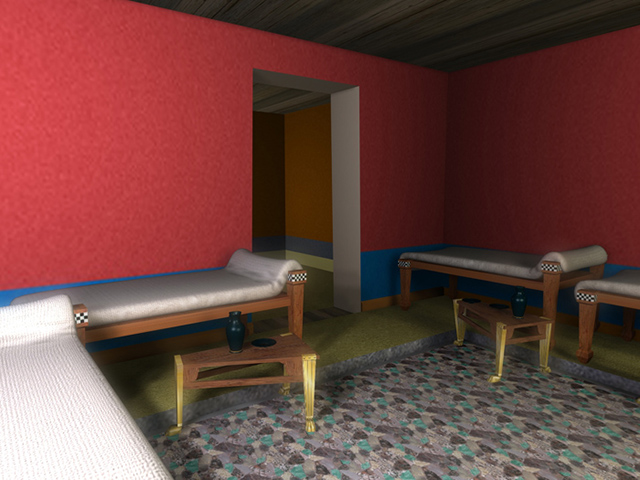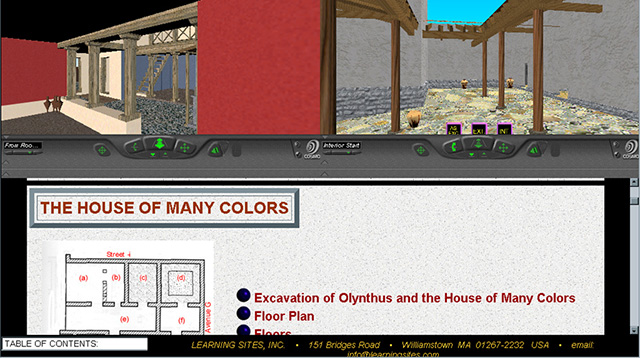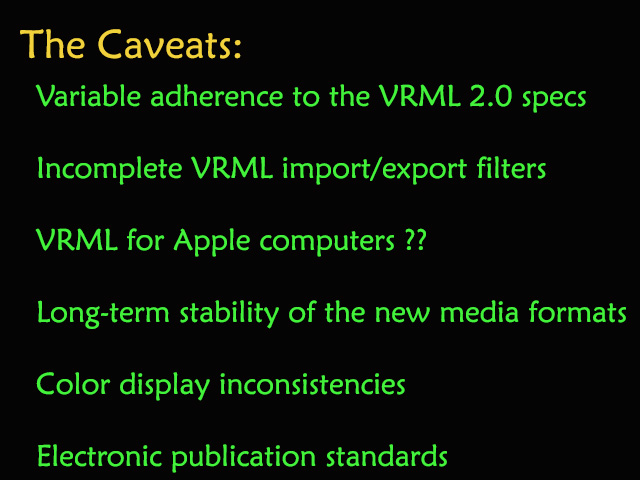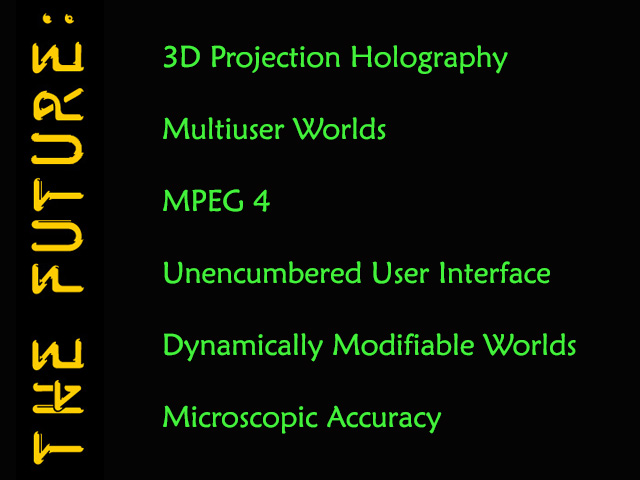Multimedia has been around for decades, but is a relatively new means for visualizing archaeological data, for coordinating archaeological publications, and for distributing our interpretive results to colleagues, students, and the general public. For example, take true virtual reality--the term often brings to mind images of exploring imaginary places, spectacular arcade games, weird body suits, motion platforms, and funny goggles. However, nearly 70 projects around the world actively model ancient sites for viewing in virtual reality, or VR.
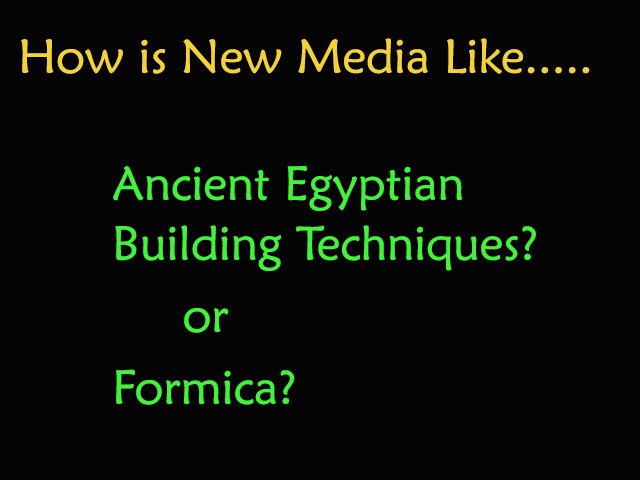 But what happens when a new technology is introduced into a well-established profession? When the architect, Imhotep introduced ashlar masonry (for the pyramid complex of King Djoser, at Saqqara, around 2800 BC), he designed stone imitations of reeds and other plants, the traditional Egyptian building materials. His innovation relied upon visual forms rooted, so to speak, in the plant-based construction of his predecessors.
But what happens when a new technology is introduced into a well-established profession? When the architect, Imhotep introduced ashlar masonry (for the pyramid complex of King Djoser, at Saqqara, around 2800 BC), he designed stone imitations of reeds and other plants, the traditional Egyptian building materials. His innovation relied upon visual forms rooted, so to speak, in the plant-based construction of his predecessors.
And, when Formica was introduced in the 1930s, what designs were first applied to its surfaces? Imitation wood color and wood graining patterns. And where was it first used? On furniture, countertops, and car detailing; that is, its location and visual vocabulary imitated wood--the previous technology. As with Imhotep's use of plant motifs, there is no inherent reason why this should be so, since both cut stone and Formica have qualities suitable for many applications and patterns totally unique to themselves. In each case, it took years before alternative uses and motifs were explored.
Both technological visions became cloaked in the visual vocabulary of the previous technology. This is not to criticize; it just happens. Likewise, many interactive graphics created by archaeologists today often present data in ways that reproduce the look, the presentation mode, and even the graphic style of our predecessor's visualization techniques. Once archaeologists recognize this, we'll have more freedom to apply the new multimedia techniques in ways that aren't just digital replacements for traditional codex-based image types.
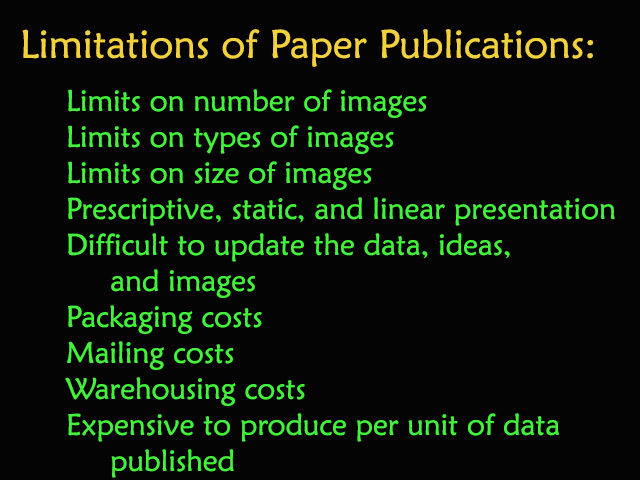 Our dependence on the codex and static 2D images have been basic to our field since our profession's inception. You've all read excavation reports, maybe even bought a few. They typically contain long descriptions of the excavation and its finds, a few charts, and only as many pictures--usually only black and white--as printing costs or book length permits. Illustrations usually include pottery profiles, isolated views of a few artifacts or trenches, and token line drawings of key features. Architectural drawings unquestionably repeat the plans, sections, and elevation reconstructions used since our discipline's 18th-century origins. But is a publication with long descriptions, a few greyscale illustrations, and a couple of line drawings and graphs really sufficient for truly understanding a site in its stratigraphic or cultural complexity? I think not. Even the most comprehensive reports necessarily present only selected portions of the whole story; only single static views of artifacts, buildings, trenches, and history.
Our dependence on the codex and static 2D images have been basic to our field since our profession's inception. You've all read excavation reports, maybe even bought a few. They typically contain long descriptions of the excavation and its finds, a few charts, and only as many pictures--usually only black and white--as printing costs or book length permits. Illustrations usually include pottery profiles, isolated views of a few artifacts or trenches, and token line drawings of key features. Architectural drawings unquestionably repeat the plans, sections, and elevation reconstructions used since our discipline's 18th-century origins. But is a publication with long descriptions, a few greyscale illustrations, and a couple of line drawings and graphs really sufficient for truly understanding a site in its stratigraphic or cultural complexity? I think not. Even the most comprehensive reports necessarily present only selected portions of the whole story; only single static views of artifacts, buildings, trenches, and history.
And what about updates? How are ideas in paper publications expanded when new information becomes available, new interpretations offered, and new visualizations created? Not easily. Articles are published and conference papers delivered, but the original publication remains a static document. Synthesizing the very latest material with previously published information is a continuing chore.
Today's emphasis on quantitative methods of interpretation and on explanations of cultural totality demand more information. But not just more data without interpretation, not just more without innovative methods of assimilating and displaying the extra material. Just access to more stuff won't work; just look at the 'Net. Utilizing the new multimedia technologies can eliminate many difficulties with traditional archaeological publications.
